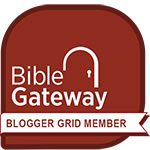
Why study God’s Word?
2 Timothy 2:15 NIV “Do your best to present yourself to God as one approved, a worker who does not need to be ashamed and who correctly handles the word of truth.”
As Christians we want to know God’s Word well enough to use it correctly. Of course, since we never know it fully, studying becomes a daily quest in learning more about it. We also receive blessings from the Lord for becoming more knowledgeable about His Word.
Here are questions to help in your study:
- What does Verse Mapping mean?
- What are resources for verse mapping?
- Where to start?
- What are the steps to verse mapping?
What does verse mapping mean?
Verse mapping is breaking one verse apart to better understand what the verse is about. This involves historical context, different translations, cross references, keywords and application of what you have learned.
It’s a simplier method because there is less information to break down at one time. This makes it easier to begin as it seems less intimidating.
What are resources for verse mapping?
Different Bible Translations:
“English Standard Version ESV
The ESV Bible is a relatively new Bible translation that combines word-for-word precision and accuracy with literary excellence, beauty, and readability.
The Message
The Message is a paraphrase from the original languages written by Eugene, H. Peterson. The Message provides a fresh and unique Bible-reading experience.
New International Version NIV
The NIV offers a balance between a word-for-word and thought-for-thought translation and is considered by many as a highly accurate and smooth-reading version of the Bible in modern English.
New King James Version NKJV
The NKJ is a modern language update of the original King James Version. It retains much of the traditional interpretation and sentence structure of the KJV Bible Study Tools“
These are just a few of the many translations. They are all the Word of God but vary from literal translations to paraphrase. You can find the different translations at Blue Letter Bible by putting the translation you need in the search box.
Bible Project
This is a great resource for learning more about the Bible. You can find the historical context for your verse mapping here. If you have a Study Bible, this information is usually in the introduction to each of the books of the Bible also.
Blue Letter Bible
A good resource for finding keywords and cross references to use in verse mapping. Instructions for using this resource can be found here: https://www.blueletterbible.org/help/using_blb.cfm
Bible Gateway and Bible Hub are some other good study resources.
What supplies are needed for verse mapping?
- Verse mapping template
- Pens, colored pencils or markers
- Bible
Where to start with verse mapping?
First you need to have a time of prayer so your heart is prepared. Next, decide what verse you want to study. Do you have a favorite verse? Some people want to begin with a shorter verse mainly because it seems easier.
Along with the provided template, I have included an example of verse mapping for you to look at. Hope this will be of help to you.
What are the steps of verse mapping?
- Looking at the verse mapping template, write your verse in the key verse box along with your reference at the top.
- Decide two different Bible translations you would like to use and put one in each translation box. Label the translation. Initials are ok.
- Put the name of the author of the book, date, audience and purpose in the context box. This can be found in the introduction of the book(where your verse is located) in a study Bible. If not, you can find it at bibleproject.com.
- Look at the verse and see words or phrases you need to define. Words that are repeated usually indicate their importance and need to be defined. (Blue Letter Bible) Words that you find confusing or don’t know the meaning also need defining. Highlight or mark these words and define them in the side boxes.
- Cross references are verses throughout the Bible that connect to your verse by similar keywords. These add more information to understanding your verse. Write these in the cross reference box. (Blue Letter Bible)
- In the About God and About Us, write information you have learned in your study. Maybe you’ve seen a attribute of God you haven’t noticed before or realized something new about how we relate to God. Put those in the appropriate box.
- The Application box is very important. If we don’t apply what we have learned, we’ll lose it. The point of this study is to listen to God’s lessons and do them.
Conclusion
Always remember to look at the verses before and after the key verse, These help explain what is going on in the verse and what the author is saying. The important thing in studying God’s Word is not to use our own opinion. Study first so you can gain information from God.
If you have any questions, please feel free to comment. I would love to help.-Jackie





Leave a Reply
You must be logged in to post a comment.